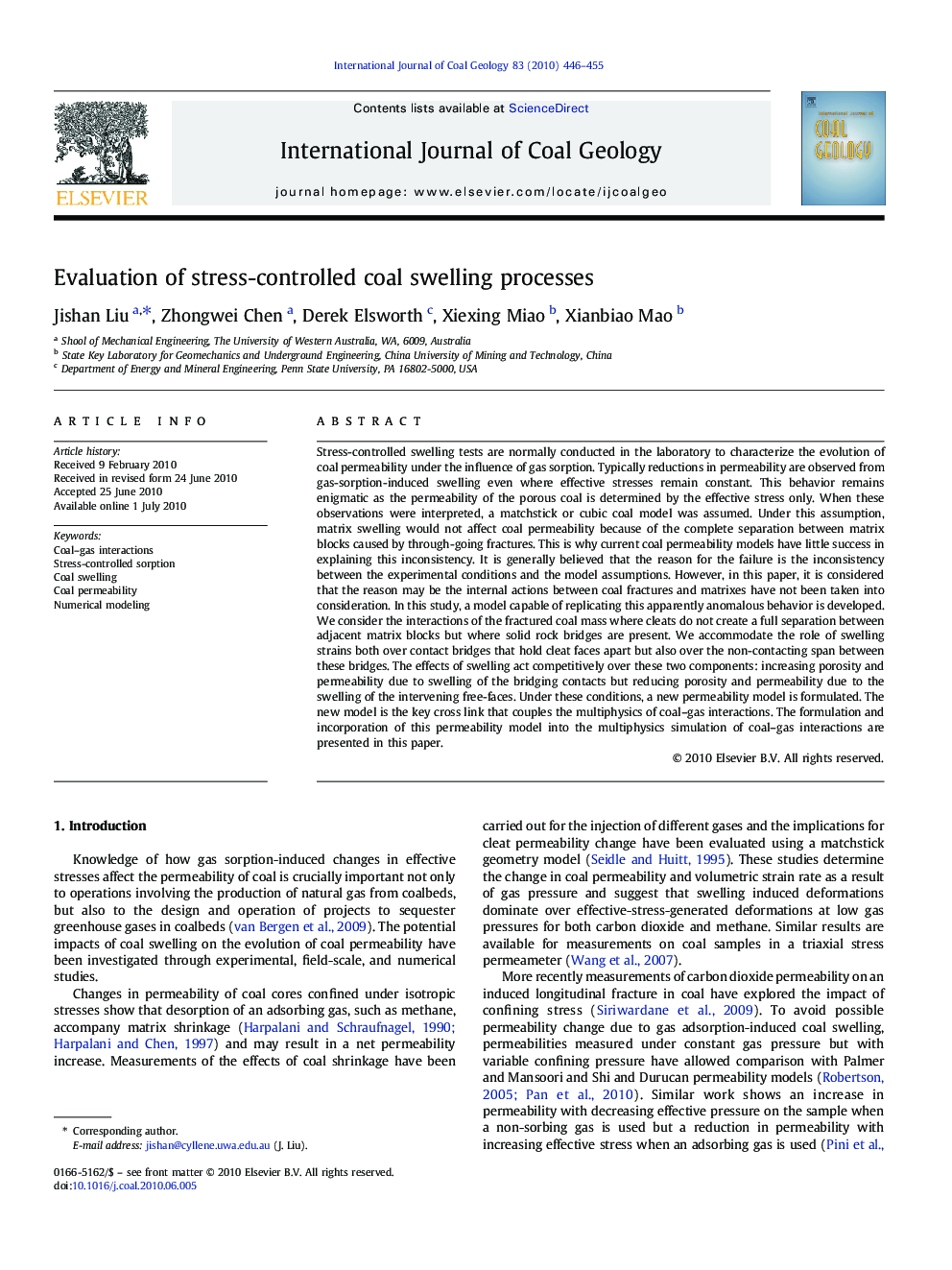| Article ID | Journal | Published Year | Pages | File Type |
|---|---|---|---|---|
| 1753743 | International Journal of Coal Geology | 2010 | 10 Pages |
Stress-controlled swelling tests are normally conducted in the laboratory to characterize the evolution of coal permeability under the influence of gas sorption. Typically reductions in permeability are observed from gas-sorption-induced swelling even where effective stresses remain constant. This behavior remains enigmatic as the permeability of the porous coal is determined by the effective stress only. When these observations were interpreted, a matchstick or cubic coal model was assumed. Under this assumption, matrix swelling would not affect coal permeability because of the complete separation between matrix blocks caused by through-going fractures. This is why current coal permeability models have little success in explaining this inconsistency. It is generally believed that the reason for the failure is the inconsistency between the experimental conditions and the model assumptions. However, in this paper, it is considered that the reason may be the internal actions between coal fractures and matrixes have not been taken into consideration. In this study, a model capable of replicating this apparently anomalous behavior is developed. We consider the interactions of the fractured coal mass where cleats do not create a full separation between adjacent matrix blocks but where solid rock bridges are present. We accommodate the role of swelling strains both over contact bridges that hold cleat faces apart but also over the non-contacting span between these bridges. The effects of swelling act competitively over these two components: increasing porosity and permeability due to swelling of the bridging contacts but reducing porosity and permeability due to the swelling of the intervening free-faces. Under these conditions, a new permeability model is formulated. The new model is the key cross link that couples the multiphysics of coal–gas interactions. The formulation and incorporation of this permeability model into the multiphysics simulation of coal–gas interactions are presented in this paper.
Research highlights►A new permeability model has been developed to characterize the evolution of coal permeability under conditions of controlled stress, and implemented into a finite element model to quantify the multiphysics of coal–gas interactions. ►This may be applied both to represent laboratory data and field scale prototypes. ►Results of the 3D simulation example show the importance of the consistency between assumptions of a coal permeability model and boundary conditions of a simulation model. ►Because the proposed coal permeability model in this study can be applied under a variety of stress conditions, it is best suitable to cases where coal deformation is rigorously considered.
